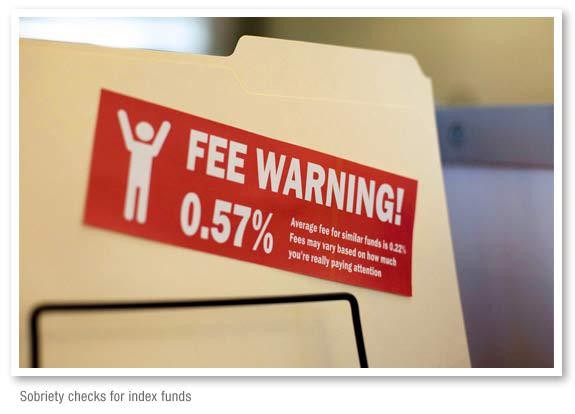Mutual Funds Have Hidden Costs
Post on: 29 Июль, 2015 No Comment

Error.
March 2, 2013
Investors know that fees are the enemy of return. But many may not realize the hidden costs incurred by their mutual funds.
A new study by Roger Edelen, a finance professor at the University of California, Davis, attempts to reveal what he calls the invisible costs that eat away at returns—transaction costs. Transaction or trading costs include the commissions paid, the bid-ask spread on each transaction, and the price, or market, impact of funds buying or selling big blocks of shares. (When a fund buys or sells a substantial amount of a company’s stock, it can move the market, causing the share price to rise or fall, thereby putting it in the unfortunate position of continuing to buy while the price is rising, or selling as the price is falling.)
Particularly problematic, says Edelen, is that the nearly 1,800 funds he and his co-authors looked at had an average expense ratio of 1.19%—yet trading costs the average fund 1.44%. The expense ratio is itemized, he says, but trading costs are just a bleeding of assets. Investors think they know their funds’ expenses, but they’re really only seeing half the picture.
Turnover often is used as a proxy for gauging both trading costs and tax efficiency, since frequent trading increases both. But it doesn’t capture all the trading that goes on, nor does it account for the type of stocks being traded, which relates to market impact, which Edelen says is the biggest driver of trading costs. If a fund is buying or selling Microsoft or Joe’s Pizza, there’s not going to be the same market friction, he says. Instead, he advises investors to assess what he calls the position-adjusted turnover: Divide the fund’s total assets by the number of its holdings, for a dollar average of its holdings. A fund with a lot of big positions tends to do poorly in terms of trading costs, Edelen says. A small-company fund with $2 billion in assets in 100 stocks, for instance, will incur more trading costs (primarily in the form of price impact) than a fund with $300 million in 100 stocks.
Not surprisingly, small-company funds incurred higher trading costs; small-cap value funds averaged 2.29%, and small-cap growth averaged 3.17%. Funds that invested in large companies had average trading costs of 0.84% for value oriented, and 0.97% for growth oriented. The vast majority of these costs are driven by price impact; commissions, on average, cost funds just 0.14%, and the bid-ask spread averages 0.13%.
Commissions are the only trading cost disclosed, albeit in Part B of a prospectus. A cynic would say the industry loves that, Edelen says. They can make the stated commissions arbitrarily low, but Wall Street finds a way to get paid. For instance, the firm on the other side of the trade might agree to buy a fund’s first 100 shares for a certain price, but lower the price for each successive block, so the fund is selling at lower and lower prices, hurting its return.

Joel Dickson, senior investment strategist for Vanguard, says he bristles at the notion of these costs being invisible—trading costs are a component of performance. He scoffs at the idea there’s a scheme afoot to artificially lower commissions to increase more invisible costs elsewhere. How many people read the prospectus? Even fewer read Part B. There’s not enough scrutiny there to warrant that kind of effort.
MANY FUND COMPANIES have ways of reducing transaction costs. More than half of the trading for Fidelity funds, for instance, is conducted through either an electronic system that provides a measure of anonymity (ideally, allowing the firm to operate with less market impact), or are interfund swaps, in which stocks can be moved out of a fund that wants to sell and into a fund that wants to buy, without incurring any transaction costs whatsoever, says Bob Minicus, head of global equity trading for Fidelity. Minicus also points to the fact that if trading costs are excessive, they’ll hurt the fund’s performance, and returns are the gauge investors use most often. Trading costs may be higher in a small-cap fund, but small-cap funds also have the opportunity for greater returns, he says.
Dickson credits the researchers for an admirable number-crunching effort, but points out that their exhaustive research—even Edelen acknowledges it took hundreds of millions of data points to come up with a signal—still only arrived at averages that can fluctuate wildly according to a variety of factors, such as how volatile the market is.
The Securities and Exchange Commission has looked at this issue a few times over the years, but measurement has long been a sticking point. Not only are trading costs difficult to calculate, they can be done only in hindsight and require a lot of data and anecdotal assumptions that would have to be standardized, were it to become a reporting requirement. For instance, if a manager decides to sell a stock, but that directive takes some time to get through compliance before it lands on the trading desk, is the movement in the stock’s price in that period part of the transaction cost?
The devil’s in the details, but the message is sound: Keep and eye on performance. Frequent or pricey trading will affect performance in ways investors can’t easily measure.














